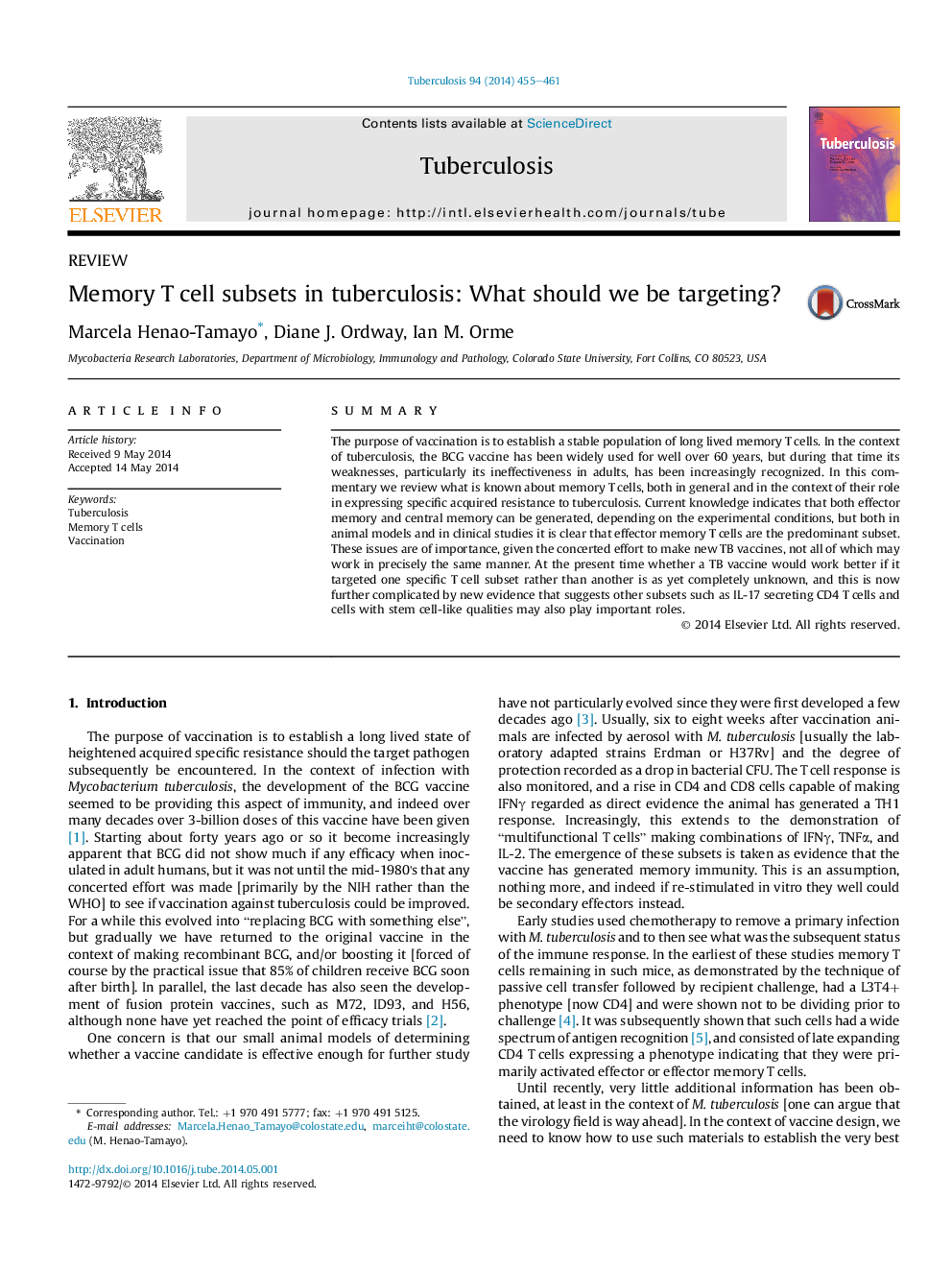| Article ID | Journal | Published Year | Pages | File Type |
|---|---|---|---|---|
| 2401553 | Tuberculosis | 2014 | 7 Pages |
SummaryThe purpose of vaccination is to establish a stable population of long lived memory T cells. In the context of tuberculosis, the BCG vaccine has been widely used for well over 60 years, but during that time its weaknesses, particularly its ineffectiveness in adults, has been increasingly recognized. In this commentary we review what is known about memory T cells, both in general and in the context of their role in expressing specific acquired resistance to tuberculosis. Current knowledge indicates that both effector memory and central memory can be generated, depending on the experimental conditions, but both in animal models and in clinical studies it is clear that effector memory T cells are the predominant subset. These issues are of importance, given the concerted effort to make new TB vaccines, not all of which may work in precisely the same manner. At the present time whether a TB vaccine would work better if it targeted one specific T cell subset rather than another is as yet completely unknown, and this is now further complicated by new evidence that suggests other subsets such as IL-17 secreting CD4 T cells and cells with stem cell-like qualities may also play important roles.
